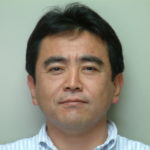Incitement by Mass Media: shallow philosophers such as Jason Stanley, Timothy Snyder
I would like to introduce the reality that the neocons are using the mass media to incite revenge. What I strongly feel to be vicious is the movement to decry Putin as a fascist and to fuel the argument that we must fight fascism until it is eradicated.
In the May 19, 2022 edition of the New York Times (NYT), Timothy Snyder, a professor of history at Yale University known for Bloodlands: Europe Between Hitler and Stalin and Black Earth: The Holocaust as History and Warning, writes, “We should say it. Russia is Fascist” in the opinion page(https://www.nytimes.com/2022/05/19/opinion/russia-fascism-ukraine-putin.html). As the title suggests, it labels Russia and Putin as fascists and advocates their eradication.
According to Snyder’s explanation, fascism was of Italian origin and gained popularity in Romania. In Romania, fascists were orthodox Christians who dreamed of purification through violence. Fascists had adherents throughout Europe and even in the United States. However, Snyder states that fascism cannot be defined in a satisfactory way.
Plausibly, he writes, “today’s Russia meets most of the criteria that scholars tend to apply.” But in his provocative statement that Russia has a cult around a single leader, Vladimir Putin,” I thought Snyder was making an entirely emotional argument rather than a dispassionate scholarly statement. Without even defining “cult,” the statement that Putin is the head of a cult, and that cult is a fascist group, contains no evidence for this at all.
Some are flat-out wrong. Patiently reading on, he writes, ” After all, fascist politics begins, as the Nazi thinker Carl Schmitt said, from the definition of an enemy.” This statement is wrong. Schmitt states that ” The phenomenon of the political can be understood only in the context of the ever present possibility of the friend-and-enemy grouping, regardless of the aspects which this possibility implies for morality, aesthetics, and economics,” in The Concept of the Political, Expanded Edition, The University of Chicago Press, 2007, p. 35 (https://www.docdroid.net/cNhoLIH/the-concept-of-the-political-carl-schmitt-pdf#page=5) merely pointed out. Fascist politics does not distinguish friend from enemy; politics distinguishes friend from enemy.
By writing lies, Snyder wants to make Russia look like a fascist. Snyder wants to make Russia look like a fascist by writing lies, claiming that we should fight the fascist Putin until he is driven to his death or until the state of Russia is exterminated. The last sentence, “If Ukraine does not win, we can expect decades of darkness,” has the ring of a threat to incite vengeance not only against the Ukrainian people but also against those belonging to Western democracies.
Incitement by The Economist
In July, The Economist will now be touting what it calls “Russian fascism.” At the end of July 2022, a lengthy article (https://www.economist.com/briefing/2022/07/28/vladimir-putin-is-in-thrall-to-a-distinctive-brand-of-russian-fascism) entitled “Vladimir Putin is in thrall to a distinctive brand of Russian fascism” appeared. As the title suggests, the article makes the argument that under Putin’s fascism, Russia is on a path from which there is no turning back.
Fascism is not defined in this article either. It asks the question, “What is Russian fascism?” and states, “It has no settled definition, but it feeds on exceptionalism and ressentiment, a mixture of jealousy and frustration born out of humiliation.”
He goes on to say that “In Russia’s case, the source of this humiliation is not defeat by foreign powers, but abuse suffered by the people at the hands of their own rulers,” and that “deprived of agency and fearing the authorities, they seek compensation by taking imaginary revenge on their state-appointed enemies.” Like Snyder, he seems to see fascism as characterized by making enemies and taking revenge on them. In addition, “Fascism involves performances—think of all those rallies and uniforms—laced with the thrill of real violence,” he said. That “Z” symbol reminds me of the Nazi “卐” (Hagenkreuz).
The history of fascism in Russia is then discussed. In the article’s view, “Russian fascism has deep roots, going all the way back to the early 20th century.” This was probably in consideration of the establishment of the “Duma” as an advisory body on legislation in August 1905, the granting of legislative power in October of the same year, and the enactment of a new electoral law in December of the same year. Subsequent elections, however, were indirect elections in which voters chose their electors and electors chose their representatives, and the right to vote was reserved for men with property. In this sense, it cannot be said to have had the characteristics of fascism, which presupposes the existence of a representative assembly.
The article states that Stalin, fearing that the victory over fascism he had won with the United States and Great Britain would empower and liberate his own people, “turned Soviet success into the triumph of totalitarianism and Russian imperial nationalism” and re-branded war allies as “enemies and fascists hellbent on destroying the Soviet Union and depriving it of its glory” – in other words, fascists. This, he said, means that Western countries are fascist, an ideology that forms the background of the U.S.-Soviet conflict during the Cold War.
Difference between Fascism and Stalinism
This article is written in a messed up way to give the impression that Russia is a fascist state. Therefore, I would like to summarize fascism with reference to “The Philosophy of ‘World History’: Contemporary Edition, From Freud to Fascism” by Masayuki Osawa, which was just published in July.
When we speak of fascism, it seems more typical of Nazi-controlled Germany than of Italy, the fascist party from which the term was derived. Fascism is characterized by (1) the emergence of a charismatic leader (personal worship), (2) dual power of party and government (in the case of the Nazis), and (3) horrific attitudes and actions toward the “enemy.” There was personal worship of Adolf Hitler in Germany, Benito Mussolini in Italy, and Joseph Stalin in the Soviet Union. In Germany and the Soviet Union, there was a dual-power system in which the Nazis and the Soviet Communist Party controlled the government. In this sense, fascism and Stalinism are very similar. However, there is a big difference between the two in terms of their horrific attitudes and actions toward “the enemy.”
Fascism (Nazism) made the Jews its enemy. Who was the enemy for Stalinism? It was the Soviet Communists and the Soviet people. Fascism massacred at least 5 million Jews, while Stalinism, conservatively speaking, sacrificed more than 1.34 million party members and people. Comparing the two, Osawa sums up the situation as follows (p. 196).
”In fascism, the enemy was a particular category of people, a particular race. The enemy was concentrated on the Jews. Other races, the mentally handicapped, homosexuals, etc. were also discriminated against and persecuted, but the worst enemies were the Jews. What would happen, then, if we removed this limitation that narrowed down the enemy to a specific category of groups? In other words, what happens if we generalize the enemy to any extent? The distinction between friend and enemy would become blurred, eventually leading to the equation ‘friend =enemy.’ Isn’t this what arose under Stalinism?”
The Nazis did not make up Jews for the slaughter of Jews. On the contrary, under Stalin, the court procedure of “confessions” was emphasized for purges, and fabrications were rampant there. They fabricate charges against those they deem traitors, and they promulgate false accusations. In other words, the fascists sought to eliminate or conceal the very fact that they were trying to eliminate their enemies, whereas the Stalinists were obsessed with getting their enemies to confess in public.
Another point that needs to be made is that fascism emerged as a reaction to the “success” or “threat” of communism after the Russian Revolution.
Hence, a distinction must be made between fascism and Stalinism. Likewise, we should not casually dismiss the current state of Putin’s domination of Russia as the same as fascism. If we do so, it will only make us feel the stench of its misbehavior. Yes, it seems as if they are trying to incite the Jews to take revenge on Putin, just as they took revenge on Hitler, by making him out to be as villainous as Hitler, through disinformation.
Jason Stanley, shallow philosopher.
There is an inexplicably shallow scholar in the United States. In October 2022, Jason Stanley, a professor of philosophy at Yale University, published an article entitled “100 Years of Fascism” (https://www.project-syndicate.org/onpoint/fascism-100-years-and-the-threat-today-by-jason-stanley-2022-10). In it, he wrote the following.
” Finally, the world has its most openly fascist leader since Hitler in the figure of Russian President Vladimir Putin, who has demonstrated why we must never become complacent about this ideology and its implications. Putin’s genocidal war against Ukraine shows that he is not a pragmatic actor, but rather a fanatic seeking to recreate a lost Russian empire. In mustering such effective resistance, the Ukrainians have confirmed the ancient truth suggested in Pericles’s famous funeral oration: democracies fight better than tyrannies, because democratic citizens fight by their own choice.”
But even here, the definition of fascist is not explained. As usual, by equating Putin with Hitler, he is the target to be eliminated. The fact that a scholar who makes such a shallow argument teaches at Yale University should give you an idea of the low intellectual level of the United States.
The reason why I criticize him so harshly is because he does not understand the Spanish War at all. The Spanish War was a war between General Franco, supported by Germany under Hitler, and the Spanish Communist Party, which seized control of the Popular Front government with the support of the Comintern in the Soviet Union under Stalin. At this time, the Spanish Communist Party has emerged as an opponent of the industrialization revolution, the Council (Junta) revolution. The Communist Party of Spain demanded the dismantling of the collectividad or anarchist militia from the partisan position that a vanguard party seizing state power should be promoted systematically from above, and that a spontaneous revolutionary movement of the people would lead to social chaos and benefit the fascists. If you know the bitterness of the Spanish people who had to choose between fascism and Bolshevism, you will understand how ludicrous Stanley’s idea of equating fascism and Bolshevism is.
Why even “lie”?
Why do the major mass media and academics in the United States and Europe engage in such blatant disinformation operations? The answer is that some of the Jewish Americans who influence these media outlets are actively involved in the war in Ukraine.
The war in Ukraine is in part an attempt by the so-called “neocons” (neoconservatives or neoconservatives) in the United States to avenge their past in Russia. Among the neocons are many Jewish Americans. For them, Russia has been an “enemy” since the Soviet era.
The history of mass media around the world has been dominated by Jewish capital. This has not changed fundamentally. As a result, many people around the world are exposed to biased views.









最近のコメント